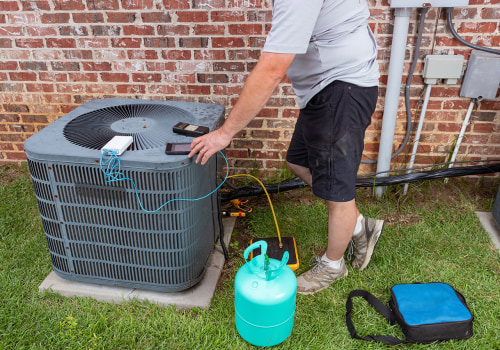Installing an HVAC system is a complex process that requires knowledge and expertise. It is essential to take safety precautions when installing an HVAC system, such as avoiding alcohol consumption and using the correct tools. Additionally, it is important to correctly size the new system and calculate heating and cooling loads. This will help to ensure that the system is able to meet the needs of the home. The next step is to find the ideal location for the unit.
This should be done carefully, as it will affect the efficiency of the system. Once the location has been determined, it is important to check that the air conditioning system is running smoothly. This will help to ensure that there are no safety risks associated with the installation. HVAC systems come with a return air box, which must be installed correctly in order for the system to work properly. For wall applications, such as when using a separate vertical fan-coil unit, it is important to ensure that the opening allows a 90-degree curvature in the return air duct.
Additionally, all T-conduits, elbows, and bypass sections must be at least 18 inches away from the fan-coil unit and any other T-supply conduit, elbow, or branch. When installing a new HVAC system, it is recommended to minimize the use of t-shirts and elbows in order to reduce pressure drop in the system. The pressure duct should have a length of 6 feet and can be cut to size depending on the arrangement of the system. The cable set should start with the suction line and extend one end a few meters, leaving the rest of the roll in a coil. A good installer will check several areas during installation, including operation of the thermostat and sequence of operation of the system. Additionally, they will replace any disconnect device and whip when replacing an air conditioner in order to ensure safety.
Before installation begins, homeowners should receive a call or text message from their HVAC provider. Once installation is complete, floor protection should be rolled up last in order to prevent dirt from entering into other areas of the home. A qualified installation team should be able to complete this process quickly and efficiently. During installation, technicians must ensure that all pipes fit correctly and are welded or soldered with brazing. They must also perform a coolant leak test in order to detect any leaks through welded joints. With a new HVAC system up and running, technicians must pay attention for any unusual noises or malfunctions.
They must also check that air flow and temperature are consistent throughout all rooms. In addition to air conditioning and heating systems, HVAC providers also sell products such as humidifiers, fans, and home automation systems. Installing an HVAC system can seem like a daunting task; however, with proper knowledge and expertise it can be done quickly and safely. It is important to understand each step involved in order to ensure that your home has an efficient and reliable HVAC system.



